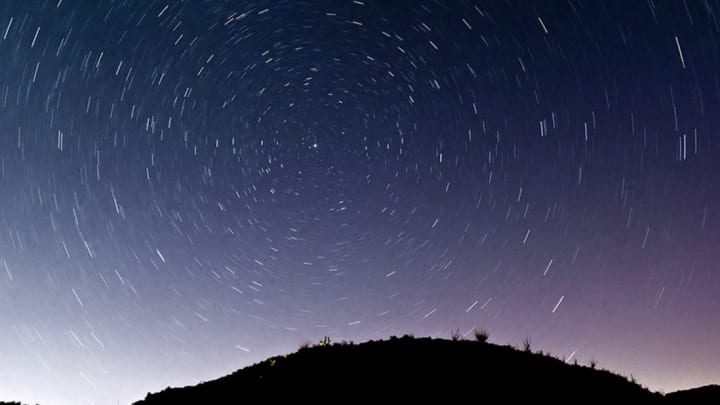The 'North Star' Is Actually Three Stars
By Mark Mancini

As savvy travelers have known for millennia, above the equator you don’t need GPS or a compass to figure out which way is north. All you need is a clear night sky.
From our perspective, the stars appear to slowly move in vast circles around what seems to be a fixed point of light more or less directly above the North Pole. This beacon happens to line up almost perfectly with the invisible axis on which Earth rotates (though it’s still about .7 degrees off target). This is, of course, the North Star, also known as Polaris (and many other aliases).
But here’s the thing: Polaris isn't one star. It’s three.
Located in the constellation Ursa Minor, Polaris is actually a triple star system. The first indication that the North Star was more than it appeared to be came in 1780, when William Herschel examined it through his telescope. Instead of spotting a single star, Herschel (who a year later discovered Uranus) instead found two close neighbors.
These stars are an odd couple. Polaris A is a supergiant roughly six times more massive and 2000 times brighter than our own Sun that dwarfs its companion, Polaris B. They're 323 light-years away, as scientists calculated in 2012. (Previous estimates had put them 434 light-years from Earth.) The vast distance blurs their boundaries to the naked eye.
In 2006, astronomers using the Hubble telescope realized this duo was actually a trio when they spotted a third, relatively diminutive star nearby, which they dubbed Polaris Ab. As you might expect, these three exert a huge gravitational force on each other. Due to their fairly close proximities, all three orbit around a common center of mass.
Some experts think two other stars, Polaris C and Polaris D, may be "gravitationally bound" to this trio, though they’re located a bit farther off.
Despite how strongly it shines, Polaris is only the 50th brightest star in the sky. Its luminosity fluctuates; right now, it’s in the midst of a particularly dazzling cycle. Today the star system looks up to 4.6 times brighter than it did in the past.
Polaris won't be the North Star for much longer (at least on the timescale of the universe). Because Earth’s axis wobbles over time, Polaris will lose its North Star status about 12,000 years from now when the more radiant Vega—which thousands of years ago was the North Star—reclaims its place.